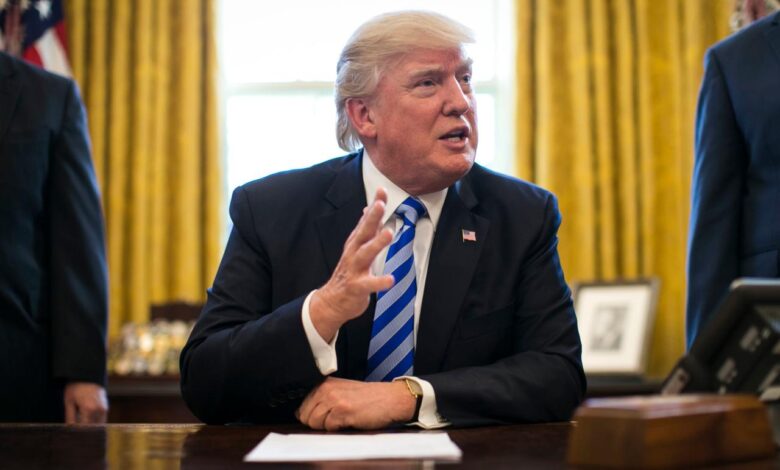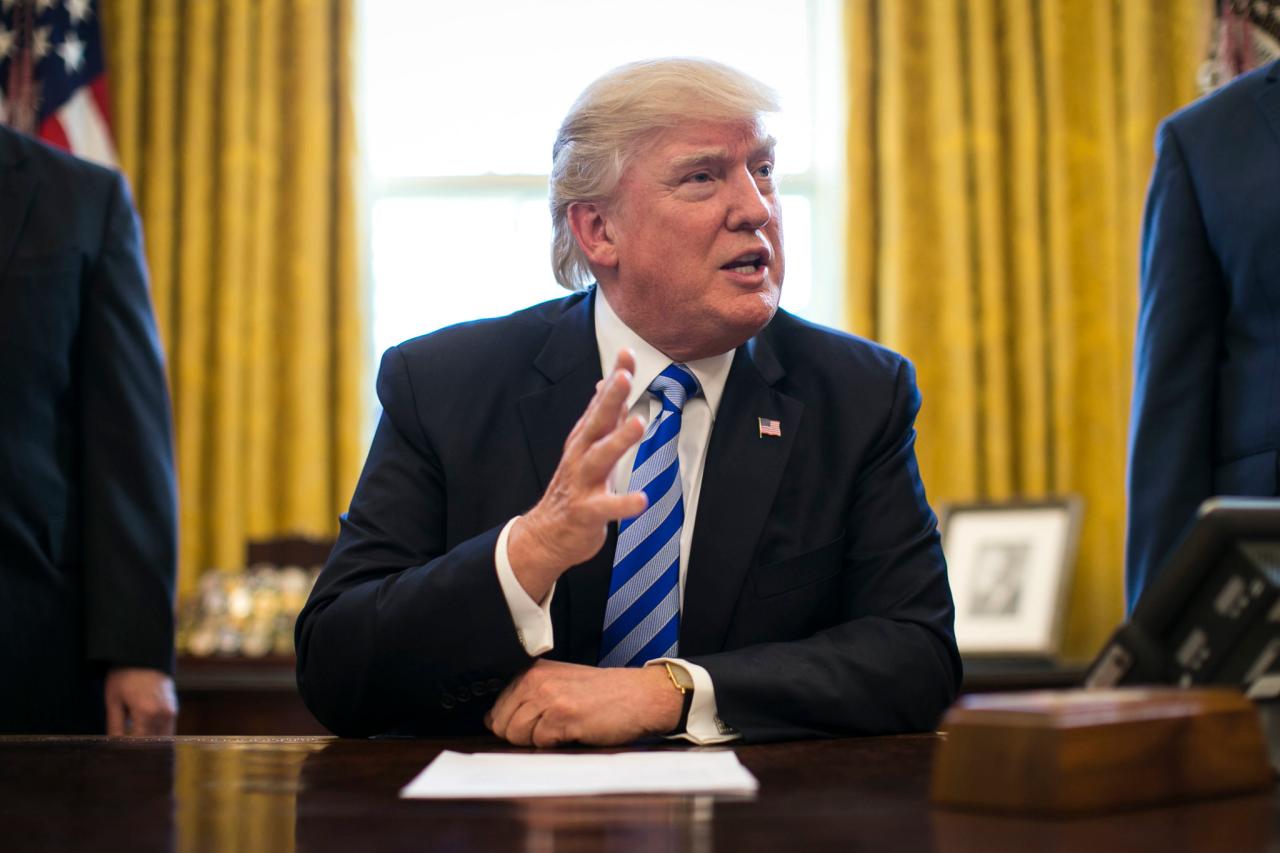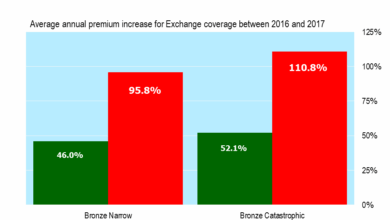
Trump policies could harm your health. From healthcare to the environment, and even the economy, decisions made during the Trump administration potentially impacted various demographics and access to vital resources. This exploration delves into the potential negative consequences, examining how these policies might affect your well-being and those around you. We’ll investigate correlations between policy choices and rising health concerns, offering a comparison with previous administrations to highlight potential impacts on public health.
This analysis examines the intricate ways economic policies, environmental regulations, and healthcare access intersect with overall well-being. We’ll explore the connections between economic instability, stress, and health outcomes, considering potential impacts on food security, housing affordability, and employment rates. The discussion also looks at how environmental policies might affect public health, focusing on the potential risks of pollution and the effects of climate change.
We’ll also assess the implications of healthcare policy changes on access to care, affordability, and preventative measures.
Potential Health Impacts of Trump Policies

The Trump administration’s policies across healthcare, environmental protection, and economic sectors had significant implications for public health. These policies, often controversial, resulted in varying outcomes and presented potential risks to different segments of the population. Understanding these impacts is crucial for evaluating the long-term effects on well-being and health equity.
Healthcare Policies and Access
The Affordable Care Act (ACA) was a key target of the Trump administration. Efforts to repeal and replace the ACA were unsuccessful, but the administration did pursue actions aimed at weakening the law’s provisions. These included efforts to reduce subsidies for insurance plans, potentially limiting access to affordable coverage for millions of Americans. The administration’s approach to healthcare policy also had an impact on the availability of preventative care services, which is critical for maintaining good health.
Environmental Policies and Public Health
The Trump administration implemented policies that significantly altered environmental regulations. These actions, often involving loosening restrictions on pollution, had the potential to increase exposure to harmful pollutants in the air and water. This could lead to a higher incidence of respiratory illnesses and other health problems, particularly in vulnerable populations. The retreat from climate change mitigation efforts could also exacerbate existing health issues related to extreme weather events and rising temperatures.
Economic Policies and Health Disparities
Economic policies enacted during the Trump administration, such as tax cuts, had potential impacts on health outcomes, particularly for vulnerable populations. The impact of these policies on healthcare access and affordability was considerable. A weakening of social safety nets could exacerbate health disparities, particularly among low-income families and minority groups. Access to healthy food and nutritious options was also potentially affected by economic policies, impacting overall well-being.
Potential Correlations with Rising Health Issues
The implementation of policies related to healthcare, environmental protection, and economic factors could have contributed to the increase in specific health problems. For instance, reduced access to preventative care, as a result of policy changes, might have contributed to a rise in chronic diseases. A potential correlation between these policies and increases in mental health issues or substance abuse problems could be further investigated.
Increased exposure to pollutants, stemming from loosened environmental regulations, could be directly correlated with respiratory illnesses.
Comparison of Policies Across Administrations
| Policy Area | Trump Administration | Previous Administration (Obama) | Potential Health Impact |
|---|---|---|---|
| Healthcare | Efforts to repeal and replace the ACA, reduced subsidies for insurance plans | Implementation of the Affordable Care Act (ACA) | Potential reduction in access to affordable healthcare, increase in uninsured rates, potential increase in chronic disease rates due to reduced preventative care access |
| Environment | Weakening of environmental regulations, withdrawal from international climate agreements | Emphasis on environmental protection, investments in renewable energy | Increased exposure to pollutants, potential increase in respiratory illnesses, exacerbation of climate change impacts on health |
| Economy | Tax cuts, deregulation | Stimulus packages, investments in infrastructure | Potential increase in health disparities, impact on access to healthy food, potential impact on social safety nets, influencing health outcomes |
Economic Policies and Health Outcomes
Trump’s economic policies had far-reaching implications for various aspects of public health. Analyzing these policies through the lens of access to healthy food, housing affordability, economic instability, employment rates, and health disparities reveals a complex interplay between economic forces and well-being. Understanding these connections is crucial for policymakers and individuals alike, as it highlights the importance of considering the health impacts of economic decisions.
Influence on Access to Healthy Food and Affordable Housing
Trump-era tax cuts and deregulation policies, while aiming to stimulate the economy, had mixed results. Some argue that these policies led to increased profits for corporations, potentially contributing to higher prices for essential goods like healthy food. Simultaneously, deregulation in the housing sector might have resulted in increased housing costs, making affordable housing less accessible to lower-income individuals.
The combination of higher food prices and limited housing options could have negatively affected the health of vulnerable populations, potentially leading to nutritional deficiencies and increased risk of chronic diseases. This is supported by research showing a correlation between food insecurity and adverse health outcomes.
Impact of Economic Instability on Stress Levels
Economic instability, including job losses, fluctuating income, and market volatility, can trigger significant stress. Stress, in turn, is linked to various health problems, including cardiovascular disease, weakened immune function, and mental health issues. Trump’s trade policies, for example, which led to uncertainty in global markets, might have contributed to increased economic anxiety and stress for many households, potentially impacting their overall health.
Economic downturns are often associated with higher rates of stress-related illnesses.
Effect of Economic Policies on Employment Rates and Potential Health Consequences
Employment rates play a critical role in health outcomes. Reduced job opportunities can lead to financial hardship, decreased access to healthcare, and increased stress, all of which negatively affect health. Trump’s focus on certain industries and trade practices might have had varying effects on employment rates across different sectors and demographics, with some experiencing job gains while others faced job losses.
The potential health consequences of job insecurity and economic hardship are significant, including higher rates of chronic diseases and mental health conditions.
While some might want to downplay the potential health impacts of Trump’s policies, it’s crucial to remember that these decisions could significantly affect your well-being. For example, reducing funding for public health initiatives might seem like a distant concern, but it can lead to a less resilient healthcare system. It’s important to stay informed, but don’t let that stop you from taking care of yourself – like, maybe checking out some resources about how to avoid unnecessary stress, like dont freak out about the coronavirus just yet – and remember, these policy decisions could have long-term health consequences.
Economic Policies and Health Disparities
Economic policies can exacerbate existing health disparities among different socioeconomic groups. For example, policies that disproportionately benefit higher-income individuals might widen the gap in access to quality healthcare, healthy food, and safe housing. The potential for increased health disparities under certain economic policies highlights the need for policies that promote equitable access to resources and opportunities for all.
This is a key aspect of understanding how economic policies affect public health.
Potential Pathways to Influence Individual Health Outcomes
- Reduced access to affordable healthy food: Higher food prices and limited access to affordable nutritious options can lead to nutritional deficiencies, increasing the risk of chronic diseases.
- Increased housing costs: Limited affordable housing options can force individuals and families to live in substandard conditions, negatively impacting physical and mental health.
- Economic instability and stress: Job insecurity, fluctuating incomes, and economic downturns contribute to increased stress levels, which can have a negative impact on physical and mental health.
- Decreased employment rates: Reduced job opportunities can lead to financial hardship, decreased access to healthcare, and increased stress, all contributing to poor health outcomes.
- Exacerbation of health disparities: Policies that disproportionately benefit higher-income individuals can worsen existing health disparities among socioeconomic groups.
Environmental Policies and Public Health: Trump Policies Could Harm Your Health

The Trump administration’s environmental policies significantly impacted public health by weakening regulations and prioritizing economic interests over environmental protection. These actions had the potential to increase pollution levels, compromise access to clean resources, and exacerbate existing health disparities, especially for vulnerable populations. The administration’s approach to climate change also had repercussions for public health, impacting the long-term well-being of communities.The Trump administration’s environmental policies, characterized by a rollback of regulations and a prioritization of economic growth over environmental protection, presented substantial public health risks.
This shift in policy direction had the potential to lead to increased pollution, compromised access to clean resources, and amplified health disparities among vulnerable populations.
Environmental Regulations and Rollbacks
The Trump administration implemented several policies that weakened existing environmental regulations. These rollbacks affected various sectors, including air and water quality, impacting the health of the general population. For example, the weakening of the Clean Power Plan aimed to ease regulations on power plants, potentially leading to increased air pollution and its associated health problems. Similarly, loosened restrictions on industrial emissions could result in higher levels of pollutants in the air and water, affecting respiratory health and other systems.
This approach could also create challenges in meeting standards for clean air and water.
Potential Health Impacts of Environmental Pollution
A strong link exists between environmental pollution and respiratory illnesses. Exposure to air pollutants, such as particulate matter and ozone, can trigger or exacerbate respiratory conditions like asthma and chronic obstructive pulmonary disease (COPD). Air pollution has also been linked to cardiovascular diseases, developmental problems, and even premature mortality. Furthermore, water pollution can contaminate drinking water sources, leading to various health problems, including gastrointestinal illnesses.
Water pollution can also have broader implications for ecosystem health, impacting human health through food chains and other interdependencies.
Vulnerable Populations and Environmental Policies
Weakening environmental regulations disproportionately affects vulnerable populations, such as children, the elderly, and low-income communities. These groups often live in areas with higher pollution levels and have limited access to healthcare. For example, children’s developing respiratory systems are particularly susceptible to air pollutants, potentially leading to long-term health problems. Similarly, the elderly and individuals with pre-existing health conditions may experience more severe health impacts from environmental exposure.
Trump’s policies might be impacting your health in unexpected ways. For example, certain decisions could lead to less accessible healthcare, potentially making it harder to get treatment for conditions like lung cancer. However, even with a diagnosis like that, it’s not too late to quit smoking, and it’s not too late quitting smoking after a lung cancer diagnosis can help.
Ultimately, these policies could be making preventative care and treatment less available, potentially jeopardizing your health and well-being.
Disparities in access to clean water and air directly correlate with health outcomes and socioeconomic factors.
Climate Change Policies and Public Health
The Trump administration’s approach to climate change policies, including withdrawal from the Paris Agreement, had potential impacts on public health. Climate change is linked to increased heat waves, extreme weather events, and altered disease patterns. These changes can result in higher rates of heat-related illnesses, injuries from extreme weather events, and the spread of infectious diseases. The potential long-term effects of these changes on public health are substantial and may be particularly challenging for vulnerable populations.
For instance, increased frequency and severity of wildfires can lead to significant respiratory problems for residents in affected areas. These potential impacts on public health underscore the need for comprehensive and effective climate policies.
Healthcare Policies and Access to Care
The Trump administration’s healthcare policies significantly impacted access to care, insurance coverage, and affordability, potentially affecting the health and well-being of numerous Americans. These policies, often aiming to reduce government intervention in healthcare, sparked considerable debate about their effectiveness and equity implications. Understanding these effects is crucial for assessing their long-term consequences on the American healthcare system.
Potential Effects on Access to Preventative Care
The Affordable Care Act (ACA) had incentivized preventative care, including routine check-ups, vaccinations, and screenings. Trump-era policies, which included efforts to weaken or dismantle the ACA, could have reduced access to these crucial services, potentially leading to delayed diagnosis and treatment of chronic diseases. This could result in increased healthcare costs in the long run due to the need for more extensive treatments for conditions that could have been caught early.
Potential Impacts on Insurance Coverage and Affordability
The Affordable Care Act (ACA) aimed to expand health insurance coverage, and its regulations influenced premiums and deductibles. Trump-era policies often sought to reduce or eliminate these regulations, potentially increasing premiums and decreasing access to affordable coverage. As a result, individuals and families may have faced higher out-of-pocket costs, making preventative care and essential treatment less accessible. Examples of similar trends can be seen in previous deregulation policies.
Potential Disparities in Access to Healthcare Based on Demographic Factors, Trump policies could harm your health
Trump-era policies could have exacerbated existing disparities in healthcare access based on factors such as race, ethnicity, socioeconomic status, and geographic location. Lower-income individuals and minority groups, often already facing challenges in accessing quality healthcare, may have been disproportionately affected by policy changes. For example, policies that reduced Medicaid coverage could have had a devastating impact on vulnerable populations.
Possible Effects on the Availability of Mental Health Services
Trump-era policies potentially impacted the availability of mental health services. Reduced funding for mental health programs, coupled with efforts to scale back ACA provisions related to mental health coverage, might have decreased access to these crucial services. The mental health crisis in the country could have been worsened by such policies, affecting the well-being of millions. Similar scenarios have been observed in other countries with reduced mental health spending.
Analysis of Impacts on Different Healthcare Services
| Type of Healthcare Service | Impact of Trump Policies (Potential Impacts) |
|---|---|
| Preventive Care | Potential decrease in access due to reduced funding and changes in insurance coverage, potentially leading to delayed diagnoses and increased healthcare costs. |
| Emergency Services | No significant direct impact is expected, but the broader effect of reduced funding for healthcare programs could indirectly impact emergency services. |
| Mental Health Services | Potential decrease in access due to reduced funding and changes in insurance coverage, potentially exacerbating existing mental health crisis. |
Public Perception and Health Outcomes
The political climate, particularly during periods of intense partisan division, can significantly impact public health. Public perception of policies, especially those as contentious as some of President Trump’s, can trigger a range of emotional responses, impacting mental and physical well-being. Understanding these dynamics is crucial for addressing the complex relationship between politics and health.The perception of policies often shapes individual reactions and beliefs, which, in turn, can lead to stress, anxiety, and potentially, physical health problems.
Furthermore, the polarization of opinions surrounding these policies can create social divisions, contributing to social unrest and further impacting health and well-being. These effects are not uniform across all groups, and diverse factors influence how individuals and communities react.
Impact on Mental Health
Public perception of Trump policies, often characterized by strong disagreement and division, can lead to heightened levels of stress, anxiety, and even depression for individuals. Exposure to political rhetoric and media coverage, particularly when laden with negativity or perceived threats, can trigger emotional distress. This is especially true for individuals who strongly identify with a particular political ideology and feel their values or beliefs are under attack.
Trump’s policies, while seemingly focused on other areas, could inadvertently have a detrimental effect on your health. Preparing for surgery, for example, often involves getting in shape for surgery, a process that can improve overall health outcomes. But if access to preventative care or affordable nutritious food is compromised due to these policies, it could make maintaining a healthy lifestyle much harder, potentially hindering recovery and putting you at risk.
So, while focusing on getting in shape for surgery getting in shape for surgery is important, it’s crucial to remember that broader policy changes can significantly impact your health.
Research has shown a correlation between political stress and negative health outcomes.
Political Polarization and Health Outcomes
Political polarization, a marked feature of the contemporary political landscape, is a significant factor in affecting health outcomes. Increased division and animosity can lead to social isolation, reduced trust in institutions, and feelings of marginalization. These feelings can manifest in various health problems, ranging from increased blood pressure to mental health issues. The 2016 US Presidential election, for example, saw significant spikes in anxiety and stress levels among individuals who felt their views were not represented.
Social Unrest and Health
Social unrest stemming from political disagreements surrounding Trump policies can have profound effects on health and well-being. Protests, demonstrations, and civil unrest can create a climate of fear and uncertainty, impacting individuals’ safety and security. The resulting stress and anxiety can have adverse effects on mental health, sleep patterns, and even physical health. Examples of this include the increase in reports of anxiety and PTSD following periods of political upheaval.
Political Stress and Health Problems
Political stress, stemming from the perceived threat or actual impact of political policies, can manifest in a variety of health problems. Chronic stress, a common consequence of political uncertainty, can weaken the immune system, increasing susceptibility to illness. Furthermore, heightened stress levels can lead to cardiovascular issues, sleep disturbances, and other physical health concerns. The perception of a threat to one’s way of life or community can lead to acute stress responses and long-term health problems.
Differential Reactions to Policies
Different groups respond to political policies, including Trump’s, in diverse ways, which can affect their health outcomes. Socioeconomic status, racial background, and other demographic factors play a role in shaping the perception and impact of policies. For example, minority groups may experience increased stress and anxiety related to perceived discrimination or threats to their civil rights. Similarly, economic anxieties can affect different groups differently, leading to varied health responses.
Illustrative Examples and Case Studies
Trump’s policies, spanning across various sectors, presented potential ripple effects on public health. Examining specific instances allows us to understand the complex interplay between policy decisions and health outcomes. Analyzing these examples reveals how seemingly disparate areas like economics, environment, and healthcare can intersect to create a larger impact on community well-being.
Impact of Tax Cuts on Rural Healthcare Access
The 2017 Tax Cuts and Jobs Act significantly altered the tax landscape, potentially influencing healthcare access, particularly in rural communities. Rural areas often face challenges in maintaining healthcare facilities and attracting medical professionals. Reduced federal funding for healthcare programs might have exacerbated these existing problems.
- Reduced funding for community health centers could lead to decreased services, making preventative care less accessible. This could impact the health of vulnerable populations in these areas.
- Limited access to preventative care might lead to an increase in chronic disease rates and higher healthcare costs in the long run. This would likely be disproportionately felt by low-income individuals and families in rural communities.
- Reduced funding for healthcare workforce training programs might affect the recruitment of healthcare providers in rural areas. This would further hinder access to care, potentially increasing the health disparities already prevalent in these regions.
Environmental Policies and Respiratory Health
Trump administration policies concerning environmental regulations, particularly those related to air quality, might have had significant impacts on respiratory health in specific regions.
- Relaxed regulations on air pollution emissions from industrial facilities could have led to increased exposure to pollutants like particulate matter, potentially leading to increased cases of respiratory illnesses and cardiovascular issues in nearby communities. This effect is particularly pronounced in areas with pre-existing health vulnerabilities.
- Reduced funding for environmental monitoring and research could result in a lack of data on air quality trends, hindering effective public health interventions and proactive measures to address pollution-related health problems.
Economic Policies and Food Insecurity
Economic policies, particularly those impacting employment and wages, can influence food insecurity and, consequently, the health of a community.
- Reduced funding for food assistance programs might increase food insecurity, leading to malnutrition and related health issues, especially among low-income households and vulnerable populations. Reduced funding for SNAP (Supplemental Nutrition Assistance Program) benefits could result in families unable to afford adequate nutrition.
- Increased unemployment rates might correlate with higher rates of food insecurity. This can be particularly concerning for families where one or more members are out of work.
- The link between economic instability and health is multifaceted. Stress associated with economic hardship can affect mental health, while lack of access to healthy food can impact physical well-being.
Healthcare Policies and Access to Mental Health Services
Changes in healthcare policies can impact access to essential services, including mental health care.
- Reduced funding for mental health programs could result in fewer available mental health services, increasing the need for care while limiting the resources to address it.
- Reduced insurance coverage for mental health services can limit access to treatment, leading to increased rates of untreated mental illness and associated problems.
- Reduced access to mental health care can lead to increased rates of substance abuse, suicide, and other mental health issues.
Concluding Remarks
In conclusion, the potential consequences of Trump-era policies on public health are significant and multifaceted. From impacting access to healthcare and healthy resources to influencing mental well-being through public perception and social unrest, the discussion highlights the importance of considering the interconnectedness of policy decisions and individual health. Understanding these connections allows for a deeper appreciation of how policies can have a profound effect on the overall health and well-being of communities and individuals.





